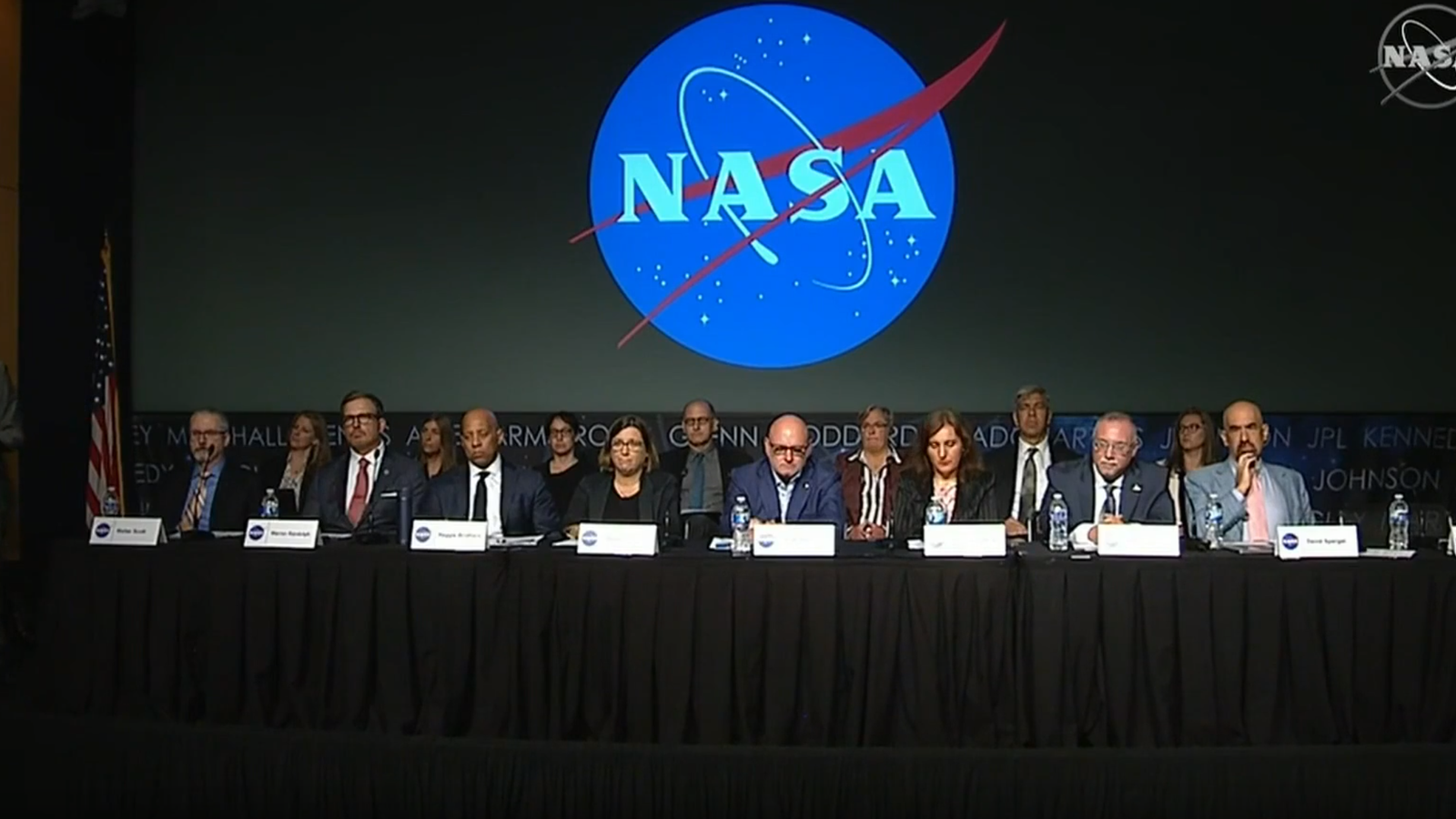NASA has held its first public meeting on UFOs, a year after launching a study into unexplained sightings.
The space agency televised the four-hour-long hearing on Wednesday, featuring an independent panel of experts at NASA headquarters in Washington, with the public taking part remotely.
The team included 16 scientists and other experts selected by NASA including retired astronaut Scott Kelly, the first American to spend nearly a year in space.
As it happened: Experts trolled online during UFO sightings meeting
The group looked at what unclassified information is available on the subject and how much more is needed to understand what’s going on in the sky, according to panel chair David Spergel.
No secret military data, such as anything surrounding the suspected spy balloons from China spotted flying over the US earlier this year, was included.
However the panel said they had seen a spike in reported sightings since then, with the US Department of Defence’s All-domain Anomaly Resolution Office – which is also investigating separately to NASA – receiving around 800 sightings so far, but only a tiny fraction of those contain signals which could be deemed “anomalous”.
As it happened: Experts trolled online during UFO sightings meeting
SpaceX launches first Arab woman on private flight to International Space Station
Mysterious flash of light over Kyiv sparks alarm and confusion after NASA denies its satellite crashed
During the meeting the experts were quizzed on a range of topics including why they have taken to calling them UAPs rather than UFOs and what NASA would do if they actually discovered extra-terrestrials.
Dr Daniel Evans, assistant deputy associate administrator for research, said that they don’t use the term UFO (unidentified flying object) any more due to the stigma attached to the term.
He said that they had instead opted to use the term unidentified anomalous phenomena (UAPs) because the topic is a “serious business”.
Please use Chrome browser for a more accessible video player
On what they would do if they were to actually discover extra-terrestrial life, astrobiologist Dr David Grinspoon said NASA would be “highly driven” to share evidence.
He referred to an example from 1996, when NASA scientists believed they had spotted possible signs of life from Mars in a meteorite.
It sparked a huge presidential news conference involving the space agency, and “that’s what would happen” if a similar event were to happen during this study, he said.
“If we discovered something, we would try to make sure we were right and then we’d loudly and proudly let the public know about it.”
With a view to making that discovery, Dr Spergel said NASA was “searching for life in any form”.
“The search for life is a really important thing. We haven’t found life beyond Earth yet,” he said. “But we are looking.”
Read more:
NASA satellite falls to Earth
NASA names Artemis II crew for trip around the moon
NASA releases new images of Uranus
However, putting a dampener on hopes we were close to first contact, Dr Evans said firmly: “I want to emphasise this loud and proud: There is absolutely no convincing evidence for extra-terrestrial life associated with unidentified objects.”
He went on to lament that several committee members had been subjected to “online abuse” for serving on the team, which detracts from the scientific process.
He said that NASA security is dealing with it.
“It’s precisely this rigorous, evidence-based approach that allows one to separate the fact from fiction,” Dr Evans said.
A final report is expected by the end of July and will be followed by a meeting to discuss its findings.








